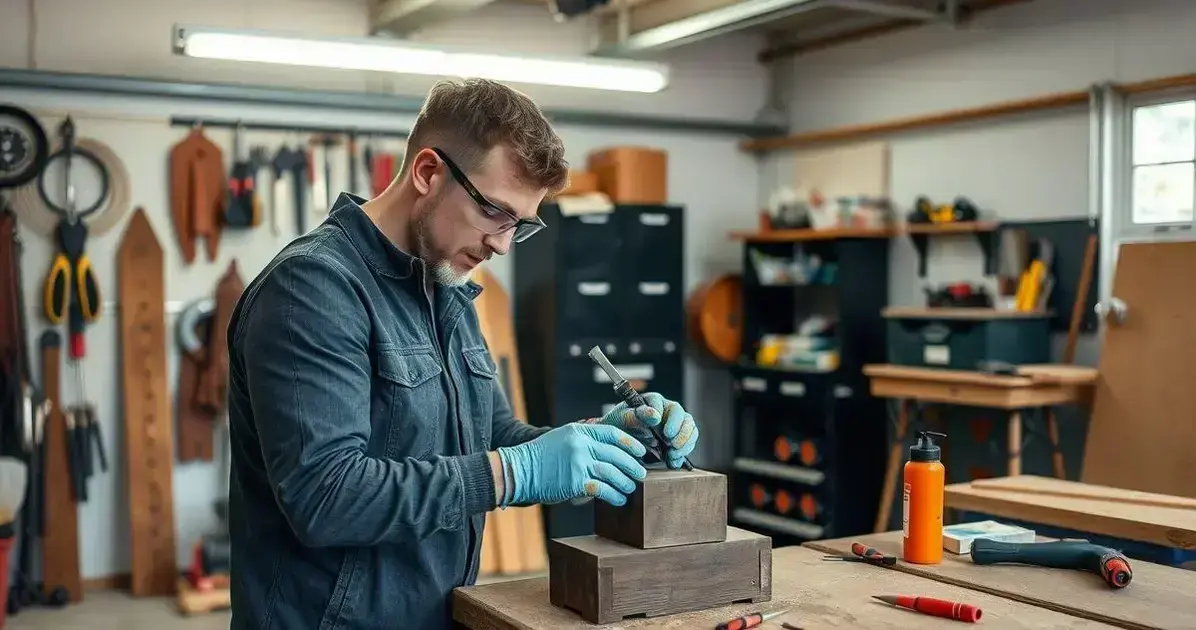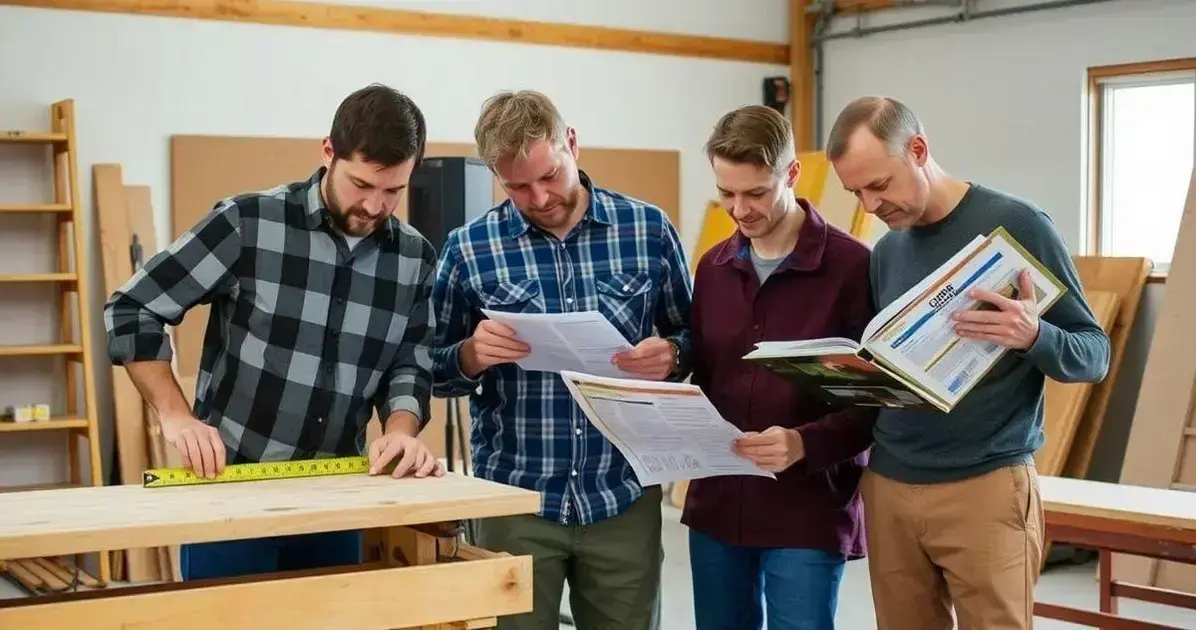DIY Home Fixes Anyone Can Do are simple, hands-on solutions that make your home more comfortable without the need to call a pro. It’s all about saving money, learning new skills, and getting that “I did it myself” feeling.
If you’re tired of squeaky doors, leaky faucets, or loose outlets, the good news is that many of these issues are quick and easy to fix. With a few basic tools and a little patience, you’ll be surprised at what you can handle on your own.
There’s a lot of practical advice coming your way—from choosing the right materials to quick fixes that add value to your home. Keep reading and see how easy it is to take home maintenance into your own hands.
Essential Tools for DIY Home Fixes
To start your journey with DIY home fixes, having the right tools is essential. Basic tools like a hammer, screwdriver, and pliers are a must in every toolkit. These tools will help you tackle common problems, from hanging pictures to assembling furniture.
In addition to the basics, consider adding a level and measuring tape to your collection. These tools ensure your projects are straight and accurate, making your fixes look professional. A good utility knife can also come in handy for cutting materials easily and safely.
Finally, don’t forget about safety gear. Always use gloves to protect your hands and safety goggles for your eyes. Being prepared with the right tools and safety equipment will make your DIY projects not only easier but also more enjoyable.
Top 10 Easy DIY Home Fixes
If you’re looking for simple solutions, here are some of the top easy DIY home fixes you can try. One popular fix is to unclog a sink using a mixture of baking soda and vinegar. This safe method removes grime and keeps your pipes clear without harsh chemicals.
Another quick fix is changing a light bulb. It’s a small task that can brighten up any room. Simply turn off the power, replace the old bulb with a new one, and you’re set! This is a simple way to improve your home’s lighting.
Fixing squeaky doors is also an easy DIY project. Just apply some lubricant to the hinges to stop the annoying noise. With these quick fixes, you’ll enhance the comfort of your home in no time, proving that DIY repairs can be both fun and rewarding.
Tips for Successful DIY Projects
To ensure your DIY projects are successful, one of the best tips for successful DIY projects is to plan ahead. Start by gathering all the materials and tools you will need before you begin. This way, you won’t have to stop in the middle of a project to search for something you forgot. Planning helps keep your workflow smooth and efficient.
Another important tip is to follow instructions carefully. Whether you are watching a video tutorial or reading a guide, make sure to pay attention to each step. Skipping steps or rushing through can lead to mistakes, and that often means you’ll need to backtrack or redo your work.
Lastly, take your time and don’t rush the process. Enjoy the journey of creating something yourself. If you feel overwhelmed, it’s okay to take a break and come back when you’re ready. Remember, DIY is about learning and having fun, so keep a positive attitude!
Safety Precautions When DIYing

When taking on DIY projects, it is crucial to follow some safety precautions when DIYing. Always wear protective gear, such as gloves and safety goggles, to prevent any injuries. This simple step can save you from cuts, scrapes, or even eye damage. Make sure your clothing is snug and avoid loose sleeves that could get caught in tools.
Additionally, ensure your workspace is safe and clean. Remove any clutter or hazards that might cause accidents while working. Good lighting is also important, as it helps you see your project clearly and reduces the risk of mistakes or mishaps. A well-organized space allows you to focus better on the task at hand.
Finally, understand how to use your tools properly. Read the instructions carefully before starting, and don’t hesitate to ask for help if you’re unsure. Take your time and only use tools for their intended purpose. By keeping safety in mind, you can enjoy your DIY projects while minimizing risks.
How to Choose the Right Materials
Choosing the right materials is key when tackling DIY home fixes. Start by understanding the type of project you are working on. Different repairs may require varied materials. For example, if you are fixing a wall, you may need drywall, paint, or specific adhesives. Knowing what you need helps make your project easier and more effective.
Next, consider the quality of the materials. Cheaper options may save you money upfront, but they often lead to problems later. Select durable materials that match your project needs. If you’re unsure, asking for advice at your local hardware store can help you find the right, high-quality options.
Finally, look for materials that are easy to work with. Some projects may require specialized items and techniques, while others can be done with standard materials. Choose what you feel comfortable using, especially if you are a beginner. This will help ensure that your DIY efforts are enjoyable and successful.
Techniques for Quick Home Repairs
When it comes to techniques for quick home repairs, one of the easiest methods is using adhesive tape. For temporary fixes, duct tape can hold items together until you find a more permanent solution. Whether it’s a leaky hose or a broken chair leg, duct tape often saves the day and is available in almost every home.
Another quick technique is using a plunger for clogged sinks or toilets. A few firm pushes can often dislodge any blockage. This is a simple and fast method that doesn’t require special tools. Always make sure to cover any overflow holes to create better pressure.
Lastly, for scratches on walls or surfaces, a crayon or touch-up paint can work wonders. Matching the color of the paint to the surface you are fixing will help disguise minor imperfections. Quick fixes like these can enhance your home’s appearance without a lot of time or effort.
DIY Fixes That Increase Home Value
Making DIY fixes that increase home value is not only smart but also rewarding. One effective way to boost your home’s worth is by updating the kitchen. Simple changes like replacing old cabinet hardware or installing a new backsplash can give your kitchen a fresh look without a huge expense. Potential buyers often focus on the kitchen, making it an area worth investing in.
Another impactful fix is improving your home’s curb appeal. Simple tasks such as painting the front door, planting new flowers, and maintaining your lawn can create a great first impression. A well-kept exterior shows that you care for your property, and this can result in an increased value when it comes to selling your home.
Lastly, consider adding energy-efficient features, like sealing windows and doors or installing a programmable thermostat. These improvements not only save money on utility bills but also appeal to eco-conscious buyers. Making your home more energy-efficient can be a significant selling point and help increase its overall value.
DIY Home Fixes Anyone Can Do: Common Mistakes to Avoid

When engaging in DIY projects, avoiding common mistakes can save you time and effort. One frequent error is not taking measurements before starting. Failing to measure can lead to purchasing wrong-sized materials and prolong your project. Always double-check your measurements to ensure everything fits perfectly.
Another mistake is rushing through the project. Patience is key when working with tools and materials. If you rush, you may overlook important steps or make careless errors. Take your time to ensure each part of the project is done correctly, which will lead to better results.
Lastly, many DIY enthusiasts forget to check local building codes. Certain projects may require permits or need to comply with safety regulations. Skipping this step can cause trouble later on. Always do your research so you can complete your projects safely and legally.